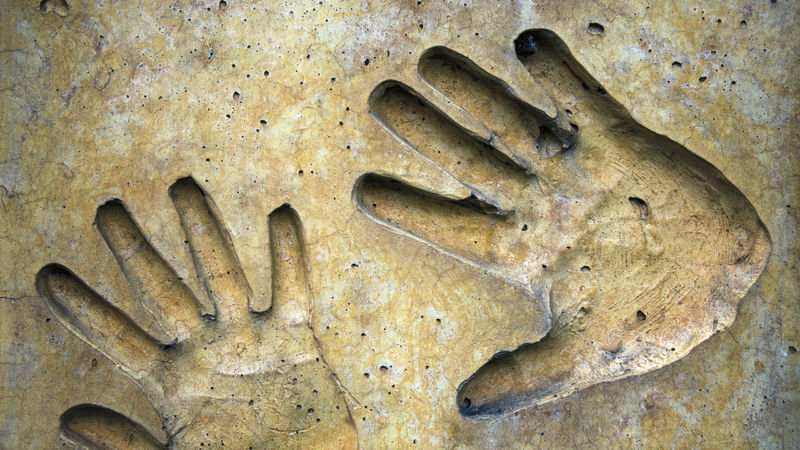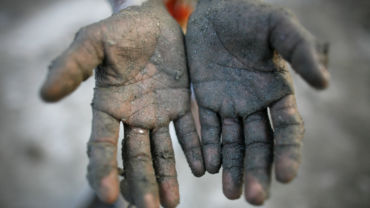Thomson Reuters Special Services will provide data analysis and expertise in support of a new U.S. government initiative to fight against human trafficking.
Human trafficking — both sex and labor trafficking — victimizes almost 25 million people all over the world, according to the U.S. Department of State’s 2019 Trafficking in Persons report.
To combat this, the U.S. Department of Homeland Security (DHS) has made fighting human trafficking a special mission of the department, taking the U.S. government’s lead in this battle. Human trafficking can happen in any community and to victims of any age, race, gender, or nationality, the DHS states. “Traffickers might use violence, manipulation, or false promises of well-paying jobs or romantic relationships to lure victims into trafficking situations,” according to the department.
Unlike many crimes, human trafficking involves the use of threats and coercion, and this impacts the willingness of victims and their loved ones to come forward to the police, or even identify themselves as victims. Additionally, the mental toll that human trafficking plays on its victims is significant and often makes the victims relucted to testify and provide evidence of the ongoing trafficking criminal networks. In many cases, human trafficking victims are often forced into other criminal activity by traffickers, such as drug distribution, bank fraud, check fraud, or identity theft. All this further compounds their reluctance to come forward as they often see themselves criminals themselves.
“This center will bring together all DHS resources, department-wide, to create a unity of effort to combat human trafficking.”
Not surprisingly, law enforcement faces significant challenges in combatting this crime, especially in identifying the victim and the criminal network. Indeed, often human trafficking victims are hidden in plain sight and their activity often goes undetected. This is by design, as traffickers want to keep a low profile and reduce their risk of detection and arrest. This makes is locating and identifying both victims and their criminal traffickers one of the toughest challenges law enforcement faces. For instance, victims — who can be U.S. citizens, immigrants in this country legally on work or student visas, or undocumented immigrants — can be involved in forced sex work or forced labor and held in businesses, farms, factories, and homes, all of which can complicate identification and location.
Thomson Reuters Special Services (TRSS), a subsidiary of Thomson Reuters, knows this challenge and has been battling human trafficking for years by using public records, and open source and deep web information in combination with its own proprietary data platforms and the expertise of its data analysts and scientists, many of whom are embedded with clients in government or the private sector.
“At TRSS its our mission to use ‘data for good,’” says TRSS President Jim Dinkins, adding that TRSS has been involved in combatting human trafficking by identifying the victims and the perpetrators, even before it was working on this with the government. “We found great success in how we apply open source data with our proprietary technology. Now, we’re supporting law enforcement and government agencies, including the DHS, in this effort.”
Dinkins is no stranger to this topic, having spent 28 years in federal law enforcement. He also helped establish Homeland Security Investigations before joining TRSS and saw first-hand how traffickers pray on the most vulnerable members of our community.
Launching the new Center for Countering Human Trafficking
To spearhead the fight against human trafficking, the DHS announced the creation of the Center for Countering Human Trafficking on Oct. 20. The new Center will be wholly devoted towards bringing together law enforcement with the goal of rescuing victims, arresting traffickers, and ending trafficking in the United States. In recognition of the ongoing contribution of TRSS in this effort, DHS invited Dinkins to be part of the ribbon-cutting ceremonies.
“With the work our TRSS analysts and data science teams have done, we’re proud to play a part of the great effort that led up to establishing the Center and bringing attention to human trafficking to the White House,” Dinkins says, adding that he will be representing the private sector data and analytical companies at a roundtable with DHS Acting Secretary Chad Wolf. “This center will bring together all DHS resources, department-wide, to create a unity of effort to combat human trafficking.”
TRSS has worked with the DHS to battle human trafficking for a number of years by locating the key people in these networks and organizations, and then determining the best way to disrupt their trafficking process, Dinkins explains. “We can run specialized data inquires and use cutting edge graph technology to identify victims and their traffickers.”
This graph technology gives TRSS the ability to use big data to identify otherwise non-obvious associations of address, people, and companies which then helps not only identify the victims and organizations, but also the most critical members of the network, he adds.
“With the work our TRSS analysts and data science teams have done, we’re proud to play a part of the great effort that led up to establishing the Center and bringing attention to human trafficking to the White House.”
“And this all comes together at scale because of the unique ability of TRSS to do this. Our customers — such as police departments and government agencies, including the DHS — couldn’t do it alone. Nobody knows our data better than we do.”
Andrew Workman, a TRSS analyst who has worked in support of the Human Trafficking Unit (HTU) at the DHS for almost two years, produces — in coordination with DHS analysts — immediately actionable lead packages that identify victims of human trafficking and their traffickers. “The cases we build vary in size and in scope, either encompassing long-term criminal network analysis or short-term, time-sensitive investigations,” Workman says. “In most cases, I act as a subject matter expert, giving my opinion on whether I see evidence of trafficking vs. another crime. When a case is ready to be sent out to the field, I will brief the agents in the field, DHS executives, and legal entities on our findings.”
Workman adds that is he proud that this first of its kind agency will have continued support from TRSS. “During my first week at HTU, the Unit Chief told me about his ‘one is enough’ mindset,” Workman recalls, adding that this thinking can be summarized as “no matter the level of effort, amount of time, or amount of resources, if we can just help one victim, it is completely worth any investment, and we’d do it again.”
The DHS’s creation of the Center for Countering Human Trafficking represents a crucial step in the ongoing fight against this crime. It also demonstrates the power of cooperation among government agencies, law enforcement, and private sector firms like TRSS to do more to confront the global challenge of human trafficking.








